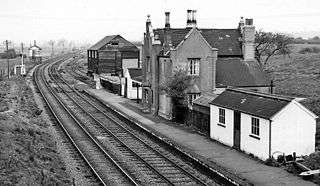Northampton–Market Harborough line
| Northampton to Market Harborough Line | |||||||||||||||||||||||||||||||||||||||||||||||||||||||||||||||||||||||||||||||||||||||||||||||||||||||||||||||||||||||||||||||||||||||||||||||||||||||||||||||||||||||||||||||||||||||||||||||||||||||||||||||||||||||||||||||||||||||||||||||||||||
|---|---|---|---|---|---|---|---|---|---|---|---|---|---|---|---|---|---|---|---|---|---|---|---|---|---|---|---|---|---|---|---|---|---|---|---|---|---|---|---|---|---|---|---|---|---|---|---|---|---|---|---|---|---|---|---|---|---|---|---|---|---|---|---|---|---|---|---|---|---|---|---|---|---|---|---|---|---|---|---|---|---|---|---|---|---|---|---|---|---|---|---|---|---|---|---|---|---|---|---|---|---|---|---|---|---|---|---|---|---|---|---|---|---|---|---|---|---|---|---|---|---|---|---|---|---|---|---|---|---|---|---|---|---|---|---|---|---|---|---|---|---|---|---|---|---|---|---|---|---|---|---|---|---|---|---|---|---|---|---|---|---|---|---|---|---|---|---|---|---|---|---|---|---|---|---|---|---|---|---|---|---|---|---|---|---|---|---|---|---|---|---|---|---|---|---|---|---|---|---|---|---|---|---|---|---|---|---|---|---|---|---|---|---|---|---|---|---|---|---|---|---|---|---|---|---|---|---|---|---|---|---|---|---|---|---|---|---|---|---|---|---|---|---|---|---|
| |||||||||||||||||||||||||||||||||||||||||||||||||||||||||||||||||||||||||||||||||||||||||||||||||||||||||||||||||||||||||||||||||||||||||||||||||||||||||||||||||||||||||||||||||||||||||||||||||||||||||||||||||||||||||||||||||||||||||||||||||||||
The Northampton–Market Harborough line is a closed railway line in England. It opened on 16 February 1859 and finally closed on 16 August 1981. The former trackbed is used by the Brampton Valley Way and part of the route has been re-opened as the Northampton & Lamport Railway.[1]
History
In 1851, large deposits of ironstone were discovered in Northamptonshire. The London and North Western Railway (LNWR) proposed a new railway line between Northampton and Market Harborough.
The line was designed by George R. Stephenson (nephew of the Railway Pioneer George Stephenson) and George Parker Bidder, and was opened in 1859.
The line includes two tunnels: Kelmarsh Tunnel, 322 yards (294 m); and Oxendon Tunnel 462 yards (422 m) on the Down line and 453 yards (414 m) on the Up line. Because the line was originally single track and later doubled, each tunnel consists of two separate bores, one for each track. One bore of each tunnel is open as part of the Brampton Valley Way.
Stations
When the line opened, there were only three intermediate stations, at Pitsford, Brixworth and Lamport. Further stations were opened, although almost all were closed by 1960.
- Northampton (Bridge Street)
- Northampton (Castle) – originally a minor station
- Pitsford and Brampton
- Spratton
- Brixworth
- Lamport
- Kelmarsh
- Clipston and Oxendon
- Market Harborough
The original LNWR station at Market Harborough was on its Stamford to Rugby line which opened in 1850. From 1857 it was shared by the Midland Railway on the "London Extension" from Leicester to Bedford. As traffic built up, the Midland built a new line at a higher elevation, crossing the LNWR and then running parallel to a new joint station in the present position, which opened in 1885.[2]

Closure
The line had a staggered history in its final years. It was first closed to passenger traffic on 4 January 1960 but was reopened to through traffic on 6 January 1969. It was closed again on 1 May 1969 and reopened on 10 July 1972. The passenger service was finally withdrawn on 26 August 1973, although the line continued to be used by freight trains.
On 15 August 1981, the day before closure, a special train was chartered to run from Northampton to Market Harborough and return. This was the last British Rail passenger train to run on the line.
Heritage Railway
The Welland Valley Rail Revival Group which had campaigned to keep the line open changed its name to Northampton Steam Railway and based itself in the old goods yard at Pitsford and Brampton station. The track was lifted by British Rail and the trackbed was sold to Northamptonshire County Council for use as a "linear park" named the Brampton Valley Way.
The Railway Society arranged to lease part of the trackbed from the County Council and began rebuilding the line as a heritage railway. The name was changed in 1992 to Northampton & Lamport Railway due to the presence of a large number of diesel locomotives. A Light Railway Order was granted and the Grand Opening took place on 31 March 1996.
References
- ↑ "NLR – History of the Line". Northampton & Lamport Railway Preservation Society. Retrieved 2009-01-05.
- ↑ Radford, B., (1983) Midland Line Memories: a Pictorial History of the Midland Railway Main Line Between London (St Pancras) & Derby London: Bloomsbury Books